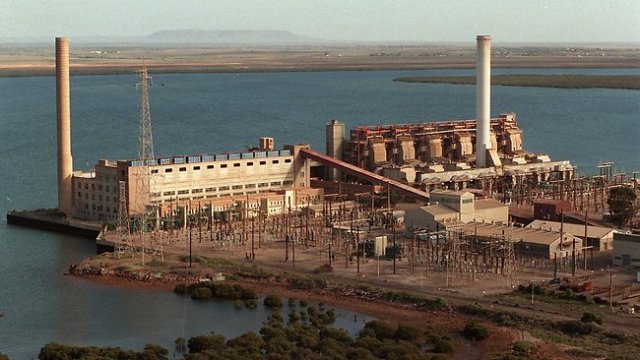
Australia’s big electricity generators are feeling the squeeze of electricity demand falling in recent years and growing competition from renewable energy.
This year, some environmentalists criticised the federal government for scrapping the “contracts for closure” negotiations, which would have made the federal government compensate operators to close up to 2000 megawatts of coal-fired power stations. However, more than 2000 megawatts of coal power plant has now been closed or “mothballed” across the country without paying the contracts for closure.
Recently closed coal-fired power plants include Playford in South Australia and Munmorah in NSW. Partial shutdowns have taken place at Yallourn in Victoria and Tarong in Queensland. The Northern coal-fired power plant in South Australia is expected to run in summer only.
The carbon price has played a minor part in the closures. Playford, an old and inefficient power plant, was much less economical in the electricity market with the added carbon price. Other brown coal power stations such as Yallourn and Northern face the same problem.
Falling demand and competition from renewables are a larger consideration. To illustrate this, in the last financial year NSW’s biggest power station at Bayswater ran at 59% capacity — well below optimum economic levels.
Australia’s large-scale Renewable Energy Target (LRET) is commonly understood to be 20% of energy supply by 2020. But in fact the target is set at a fixed amount of 41,000 gigawatt hours. Earlier projections said that this would amount to 20% of electricity needed by 2020. But this amount may actually end up being as much as 25% come 2020.
Despite all sides of federal politics claiming to support the LRET, it has been subjected to review by the Gillard government. The large energy generator/retailer companies Origin and Energy Australia have called for the target to be reduced and changed to a floating percentage instead of a fixed amount of energy.
Renewable industry sources and environmentalists have pointed out that a floating percentage would not give the security and investor confidence required to build enough renewable energy.
The Climate Change Authority’s preliminary report, released on October 26, recommended that the target remain unchanged.
Campaign group 100% Renewable have teamed up with the Australian Conservation Foundation to launch a “People’s RET Review” where members of the public can fill in an online survey of their own views on the LRET. The groups say: “Big power companies and lobby groups who want to slow the development of renewables in Australia are using the RET review process to try and reduce the renewable energy target.”
Coal industry associated analysts ACIL Tasman have released a report claiming the LRET is going to add $53 billion to household electricity bills. But as energy industry commentator Giles Parkinson has pointed out at RenewEconomy: “Even if you accept the ACIL Tasman numbers — which no one outside the coal industry does — it translates into $840 per household over 18 years, or $46 a year, or 90c a week, or 13c a day.”
Other estimates challenge the ACIL Tasman figures. A report commissioned by the Clean Energy Council has found that the LRET will help keep wholesale prices lower, due to what is known as the “merit order effect”, which preferences renewable energy.
Meanwhile, renewable energy has made a large inroad into generation capacity in South Australia, with wind power generating about 28% of that state’s electricity and still growing. The state’s solar power use is also at the highest level in the country.
The merit order effect has lowered South Australian wholesale spot prices. The Essential Services Commission of South Australia ruled that standing contract electricity prices must be reduced by 8.1% from January due to low wholesale electricity prices. This would equate to about $160 a year for household bills.
In response, electricity generator and retailer AGL has said it would suspend operations and halt any further investment in new generating capacity in South Australia (including renewables).
Wind farms continue to be built in the state. The latest project started being built last week, Snowtown II, and will add 270 megawatts of generating capacity. Owner TrustPower (a NZ utility) claims it will be capable of generating more than 10% of South Australia’s electricity.